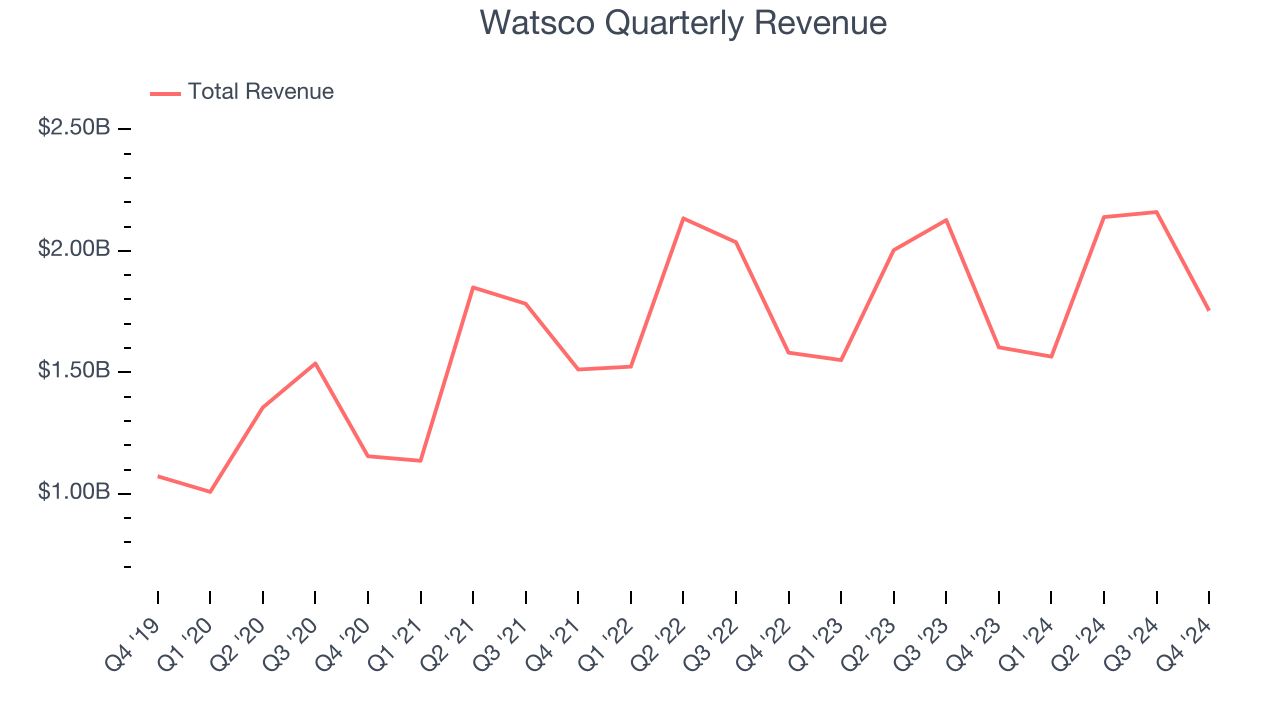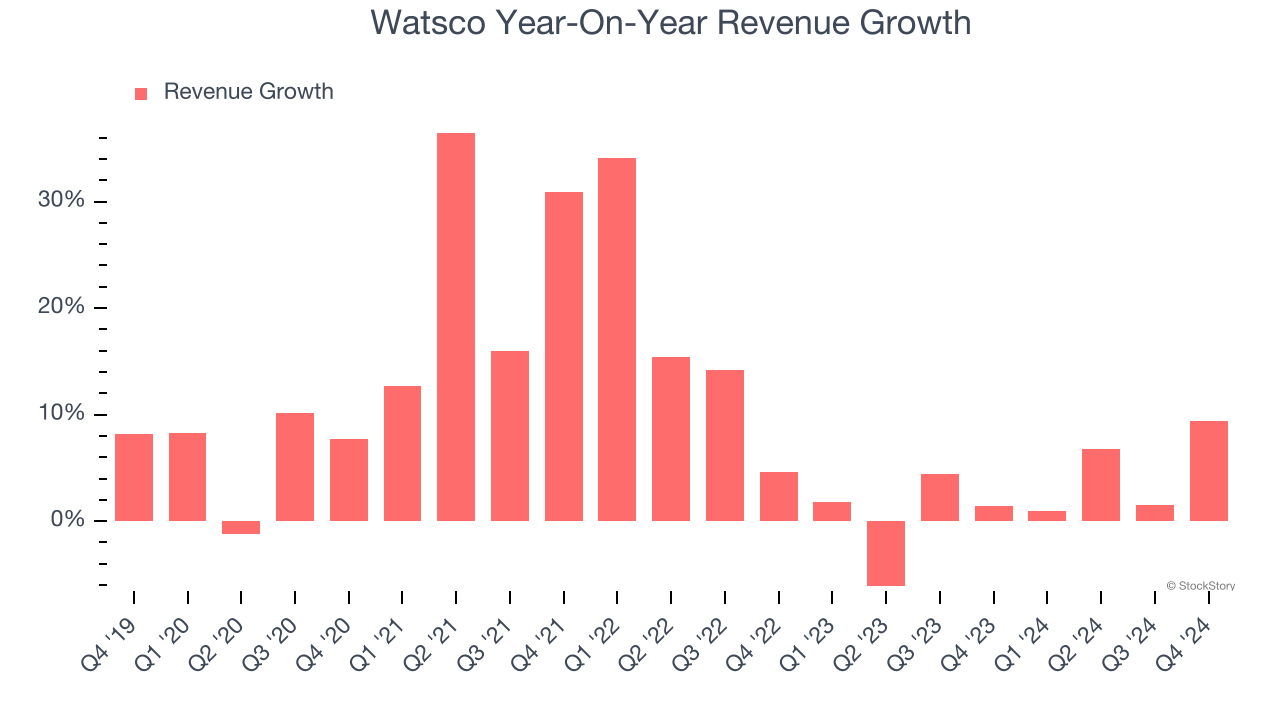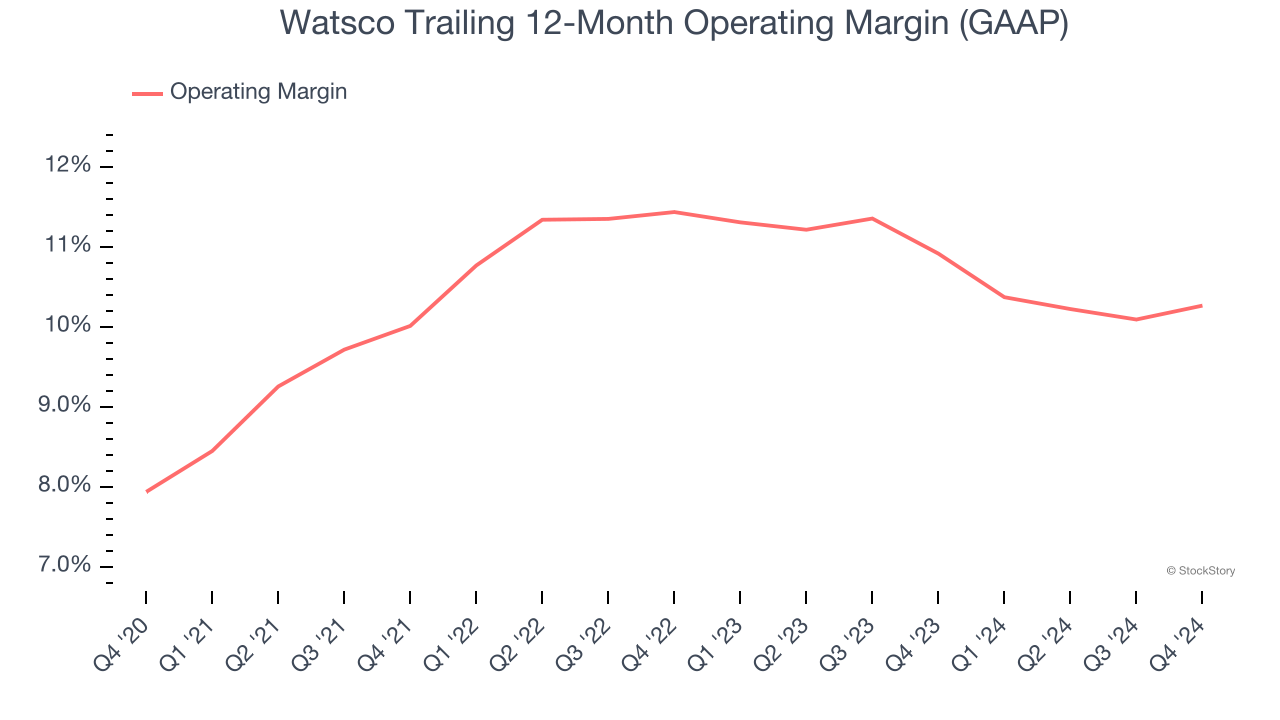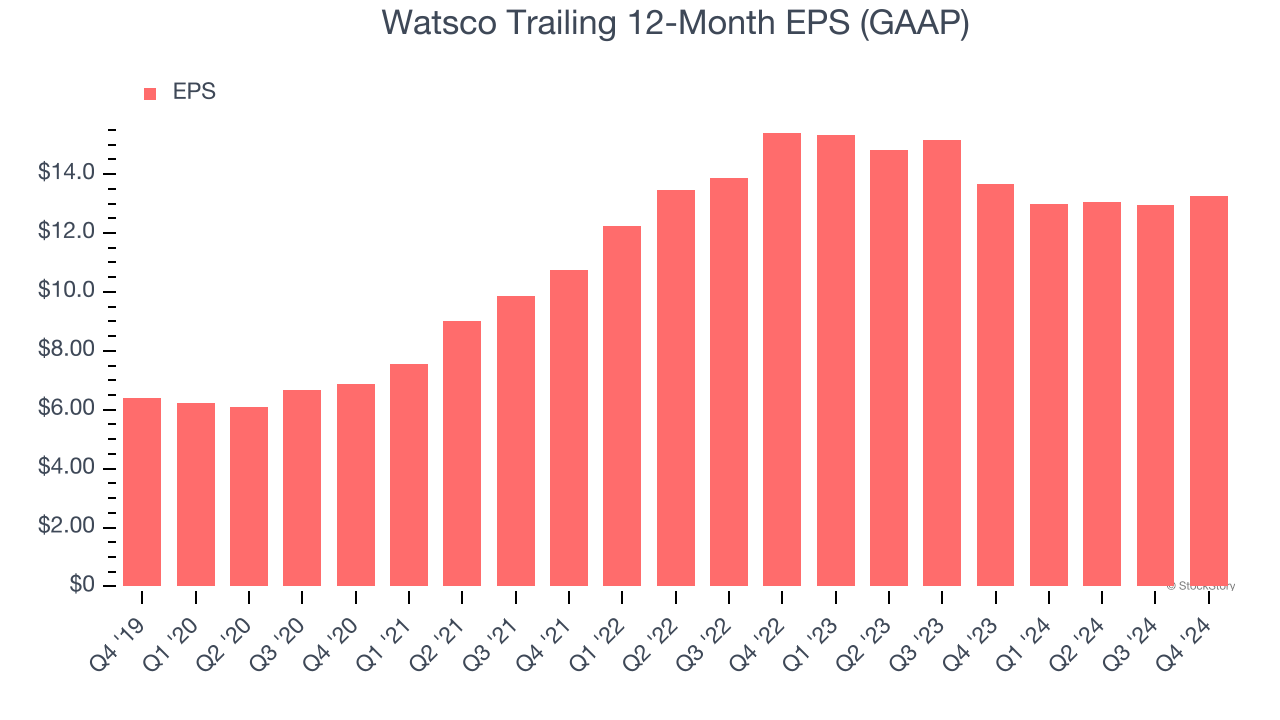
Equipment distributor Watsco (NYSE: WSO) announced better-than-expected revenue in Q4 CY2024, with sales up 9.4% year on year to $1.75 billion. Its GAAP profit of $2.37 per share was 8.2% above analysts’ consensus estimates.
Is now the time to buy Watsco? Find out by accessing our full research report, it’s free.
Watsco (WSO) Q4 CY2024 Highlights:
- Revenue: $1.75 billion vs analyst estimates of $1.66 billion (9.4% year-on-year growth, 5.3% beat)
- EPS (GAAP): $2.37 vs analyst estimates of $2.19 (8.2% beat)
- Adjusted EBITDA: $156.6 million vs analyst estimates of $140.1 million (8.9% margin, 11.8% beat)
- Operating Margin: 7.8%, up from 6.7% in the same quarter last year
- Free Cash Flow Margin: 21.1%, up from 18% in the same quarter last year
- Market Capitalization: $17.71 billion
Albert H. Nahmad, Watsco’s Chairman and CEO, commented: “Watsco had a terrific fourth quarter, achieving record sales and earnings, improved operating efficiency, expanded margins and record cash flow. Looking ahead, the transition to A2L products is well underway, providing incremental opportunities for growth and share gains as our technology platforms gain more adoption in the marketplace. Our teams continue to lead and innovate, and I am optimistic that our industry-leading scale, entrepreneurial culture, technology advantage and financial strength position us to continue to capture growth and share.”
Company Overview
Originally a manufacturing company, Watsco (NYSE: WSO) today only distributes air conditioning, heating, and refrigeration equipment, as well as related parts and supplies.
Infrastructure Distributors
Focusing on narrow product categories that can lead to economies of scale, infrastructure distributors sell essential goods that often enjoy more predictable revenue streams. For example, the ongoing inspection, maintenance, and replacement of pipes and water pumps are critical to a functioning society, rendering them non-discretionary. Lately, innovation to address trends like water conservation has driven incremental sales. But like the broader industrials sector, infrastructure distributors are also at the whim of economic cycles as external factors like interest rates can greatly impact commercial and residential construction projects that drive demand for infrastructure products.
Sales Growth
Examining a company’s long-term performance can provide clues about its quality. Any business can put up a good quarter or two, but the best consistently grow over the long haul. Thankfully, Watsco’s 9.8% annualized revenue growth over the last five years was solid. Its growth beat the average industrials company and shows its offerings resonate with customers.

We at StockStory place the most emphasis on long-term growth, but within industrials, a half-decade historical view may miss cycles, industry trends, or a company capitalizing on catalysts such as a new contract win or a successful product line. Watsco’s recent history shows its demand slowed as its annualized revenue growth of 2.3% over the last two years is below its five-year trend. 
This quarter, Watsco reported year-on-year revenue growth of 9.4%, and its $1.75 billion of revenue exceeded Wall Street’s estimates by 5.3%.
Looking ahead, sell-side analysts expect revenue to grow 5.4% over the next 12 months. While this projection suggests its newer products and services will spur better top-line performance, it is still below average for the sector.
Software is eating the world and there is virtually no industry left that has been untouched by it. That drives increasing demand for tools helping software developers do their jobs, whether it be monitoring critical cloud infrastructure, integrating audio and video functionality, or ensuring smooth content streaming. Click here to access a free report on our 3 favorite stocks to play this generational megatrend.
Operating Margin
Watsco has managed its cost base well over the last five years. It demonstrated solid profitability for an industrials business, producing an average operating margin of 10.3%. This result was particularly impressive because of its low gross margin, which is mostly a factor of what it sells and takes huge shifts to move meaningfully. Companies have more control over their operating margins, and it’s a show of well-managed operations if they’re high when gross margins are low.
Looking at the trend in its profitability, Watsco’s operating margin rose by 2.3 percentage points over the last five years, as its sales growth gave it operating leverage.

In Q4, Watsco generated an operating profit margin of 7.8%, up 1 percentage points year on year. The increase was encouraging, and since its operating margin rose more than its gross margin, we can infer it was recently more efficient with expenses such as marketing, R&D, and administrative overhead.
Earnings Per Share
Revenue trends explain a company’s historical growth, but the long-term change in earnings per share (EPS) points to the profitability of that growth – for example, a company could inflate its sales through excessive spending on advertising and promotions.
Watsco’s EPS grew at a spectacular 15.7% compounded annual growth rate over the last five years, higher than its 9.8% annualized revenue growth. This tells us the company became more profitable on a per-share basis as it expanded.

Diving into Watsco’s quality of earnings can give us a better understanding of its performance. As we mentioned earlier, Watsco’s operating margin expanded by 2.3 percentage points over the last five years. This was the most relevant factor (aside from the revenue impact) behind its higher earnings; taxes and interest expenses can also affect EPS but don’t tell us as much about a company’s fundamentals.
Like with revenue, we analyze EPS over a shorter period to see if we are missing a change in the business.
For Watsco, its two-year annual EPS declines of 7.3% mark a reversal from its (seemingly) healthy five-year trend. We hope Watsco can return to earnings growth in the future.
In Q4, Watsco reported EPS at $2.37, up from $2.06 in the same quarter last year. This print beat analysts’ estimates by 8.2%. Over the next 12 months, Wall Street expects Watsco’s full-year EPS of $13.25 to grow 10.1%.
Key Takeaways from Watsco’s Q4 Results
We were impressed by how significantly Watsco blew past analysts’ EBITDA expectations this quarter. We were also excited its revenue outperformed Wall Street’s estimates by a wide margin. Zooming out, we think this quarter featured some important positives. The stock traded up 2.4% to $497.10 immediately following the results.
Watsco may have had a good quarter, but does that mean you should invest right now? When making that decision, it’s important to consider its valuation, business qualities, as well as what has happened in the latest quarter. We cover that in our actionable full research report which you can read here, it’s free.
